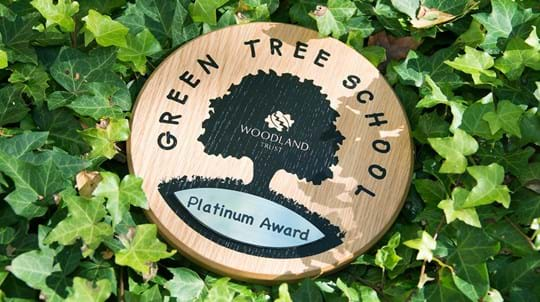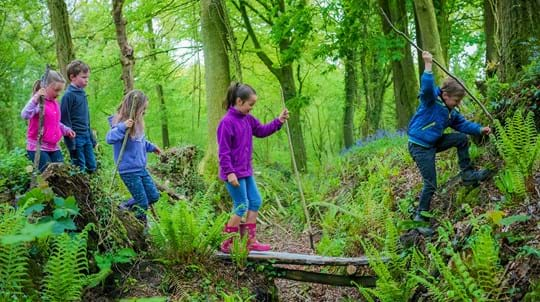Submit your evidence
Log onto your Green Tree Schools Award dashboard and tell us how you've completed this challenge.
Log in or registerStep into a fantastical world of fairies and magic... Take learning outdoors and discover some of the trees and plants in A Midsummer Night's Dream.
We’ve teamed up with The Shakespeare Birthplace Trust, organisers of Shakespeare Week, to create a challenge based on one of his best-known plays, A Midsummer Night’s Dream.
This is a brilliant opportunity to take learning outdoors and to let the natural beauty of trees and woods inspire your pupils. It can also support literacy and drama lessons.
When you complete this challenge you’ll earn two points on the Green Tree Schools Award.
A Midsummer Night’s Dream is set in an enchanted wood filled with trees, flowers… and mischievous fairies!
Go on a class trip to a local wood and see if you can find some of the trees and plants that pop up in the play. Can you spot violets, ivy or oak trees? Download the Shakespeare plant ID sheet (PDF 809 KB) to help your pupils identify them. Take some notebooks and pencils so children can draw the plants they find.
Encourage your class to use all their senses to explore. Ask them to write down words and phrases that describe the sights, sounds and smells of the wood so you can discuss them back in the classroom.
Don’t forget to keep your eyes peeled for signs of fairies too…
Find a clearing and create a woodland theatre. Use natural objects like logs and rocks for your audience to sit on, then tell your own stories and fairy tales.
Act out part of the play or quote some of Shakespeare’s famous lines, like those below. They describe the woodland setting where Titania sleeps:
I know a bank where the wild thyme blows, where oxlips and the nodding violet grows, quite over-canopied with luscious woodbine, with sweet musk-roses and with eglantine. There sleeps Titania sometime of the night, lull'd in these flowers with dances and delight.
Back at school, create a display about A Midsummer Night’s Dream inspired by your visit to the woods. Use your pupils’ words and descriptions, include quotes from the play, add photos and drawings of the plants you found along with any other highlights of your trip.
Your class could also write some Shakespeare-inspired poetry or descriptive passages to add to the display. Encourage students to explore themes like magical plants, fairies, an enchanted wood, trees or flowers.
This activity is worth two points on our award. To claim them, show us how your school has completed the Shakespeare challenge. This could include photos, poems or illustrations.
To submit your evidence, log onto your Green Tree Schools Award dashboard and click the 'Submit evidence' button at the top right of the screen. Complete the form to show how you've completed this challenge and we’ll award your points within 10 working days.
Log onto your Green Tree Schools Award dashboard and tell us how you've completed this challenge.
Log in or registerWe like to use comments and photos from schools to inspire other teachers and young people about outdoor learning. With your permission, they could appear on our award materials, website, press releases and social media.
You can find out more about how we use and look after your personal information in our privacy policy.

This challenge was created with The Shakespeare Birthplace Trust to mark Shakespeare Week - a national celebration that inspires children about the world's greatest playwright.

Support us
Join 16,000 schools taking part in our award scheme and complete environmental projects to earn certificates for your pupils.

Support us
Find a wood near your school for some inspirational outdoor learning.

Trees woods and wildlife
Use our wildlife fact files to support lessons about mammals, birds and minibeasts.